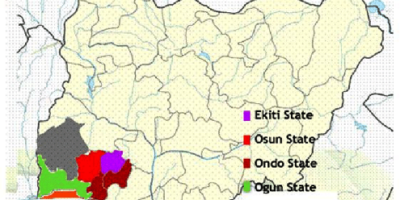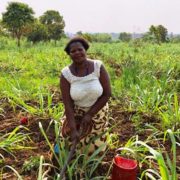The Department of Criminal Investigations has implemented measures to improve case detection and evidence gathering.
Kenya has taken commendable action to tackle increases in child sexual exploitation and abuse (CSEA) by introducing a robust legal framework for protecting children. Following on, the government needs to focus its efforts on improving implementation, says TRACE Kenya and Equality Now in a new advocacy brief that identifies how a lack of awareness about laws and policies, weak enforcement, low reporting rates, and inadequate data collection is enabling perpetrators to avoid punishment.
Enhancing Policy Responses to Addressing Child Sexual Exploitation and Abuse (CSEA) in Kenya provides a series of recommendations for the Kenyan government on how to enhance responses to CSEA. These recommendations are the culmination of discussions between government officials and Civil Society Organisations (CSOs) including Equality Now, TRACE Kenya, and others, sharing expertise on how best to build upon the findings in the 2022 Out of the Shadows Index (OOSI).
The OOSI serves as a “government report card” on CSEA prevention and response efforts by 60 countries. Kenya ranked 21st overall and second in Africa in how effective its laws, programs, and policies are in averting and dealing with CSEA.
The index highlights successes and shortfalls in CSEA laws and policies, and outlines five areas that influence access to justice for children who have been sexually abused, namely – legislation, national capacity and commitment, policies and programs, justice processes, and support service and recovery.
Child Sexual Exploitation and Abuse in Kenya
Evidence indicates that CSEA is becoming more prevalent in Kenya, with poverty and socio-economic inequalities playing a significant role. The scale of the problem has been exacerbated by the Covid-19 pandemic, which has also coincided with a rise in cases involving younger children. The Survivors of Sexual Violence in Kenya Network found that the average age of victims has dropped to 12-years-old, compared to 16 pre-pandemic.
Kenya has no national database for recording CSEA cases. While there has been some progress in data collection, inadequate and inaccurate information capture is making it harder to get to grips with the problem and is hindering effective resource allocation.
CSOs report that CSEA in Kenya is most commonly perpetrated by family members or others already known to their victims, and many crimes go unreported as survivors fear being blamed, stigmatized, or disbelieved. Coordinated efforts by the state and other duty bearers are needed to reduce stigma and victim-blaming. Evidence shows this can significantly improve the legal and psychological outcomes for survivors.
For those who report violations, it is common to be sent back to the home or community where their abuser lives, putting them at risk of further harm. Awareness raising about existing protection mechanisms and how to support at-risk children would be extremely beneficial, notably amongst people working with vulnerable groups.
Government departments and CSOs that deliver shelter, and medical and psychosocial care, are frequently hampered by underfunding and understaffing that impairs service delivery. CSEA survivors often require long-term psychological and emotional support, but CSOs aren’t always equipped to help the large numbers of children in need, and this limits the availability of assistance. Furthermore, a lack of coordination means survivors may be re-traumatized by having to repeatedly recount their abuse to different service providers.
To reduce CSEA, national strategies have to address underlying social and economic conditions that render children vulnerable. But programs are not reaching marginalized and grassroots communities nor the organizations supporting them. This means much-needed insights on how to prevent and respond to CSEA aren’t being utilized.
Online sexual abuse is increasing
Fueled partly by Kenya’s position as a technology hub in East Africa, the country has experienced a surge in CSEA involving the use of digital technologies, and abuse is happening increasingly in the digital realm. This includes the production and distribution of CSEA material and transnational organized crimes such as sex trafficking.
The online dissemination of CSEA content is especially difficult for law enforcement to handle because of its multijurisdictional nature. CSEA material may be stored on servers in different countries and subject to various laws, with crimes often conducted via encrypted networks and on the Dark Web.
Legal and policy responses to CSEA
In response to international and regional laws that oblige governments to address CSEA, Kenya should be congratulated for strengthening its national child protection framework by fast-tracking the introduction of various national laws and policies. This has created opportunities for the state and other stakeholders to collaborate on pooling resources, coordinating enforcement, and making legal information more accessible to survivors, first responders, caregivers, and the public. In addition, access to government funding has been opened up for institutions legally mandated to protect children.
Law enforcement officials, people working in the justice sectors and civil society, and all those involved in identifying, investigating, and prosecuting CSEA – including legal, medical, and support staff – would benefit from tailored legal training and accessible guides that explain new laws and policies.
In Kenya, CSEA survivors are entitled to various legal protections outlined in Article 19 of the UN Convention on the Rights of the Child. This incorporates the right for children to give evidence on camera, in a safe space, under a protective cover, and through an intermediary. Many courts are making efforts to create more child-friendly environments, and children’s courts have been established in some counties.
The Department of Criminal Investigations has implemented measures to improve case detection and evidence gathering. But collecting, storing, and presenting evidence in criminal proceedings needs to be enhanced, and the police, public prosecutors, and judiciary, should be more assertive, especially in prosecuting online CSEA.
Paul Adhoch, Executive Director of TRACE Kenya, says, “Kenya has no doubt made progress in policy and legislative frameworks to protect children from sexual abuse and exploitation. This is commendable. Much work still remains in implementation of these laws, and addressing the emerging new frontier for child abuse and exploitation, the digital platform.”
Tsitsi Matekaire, Global Lead for Equality Now’s End Sexual Exploitation program, explains: “To confront the proliferation of child sexual exploitation and abuse in Kenya, particularly in the digital realm, more funding and awareness-raising is urgently needed. Success also requires the government, policymakers, civil society, and the private sector to adopt a multi-sectoral approach rooted in collaboration that complements each other’s efforts.”




















